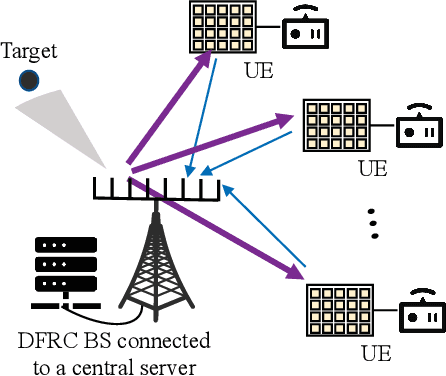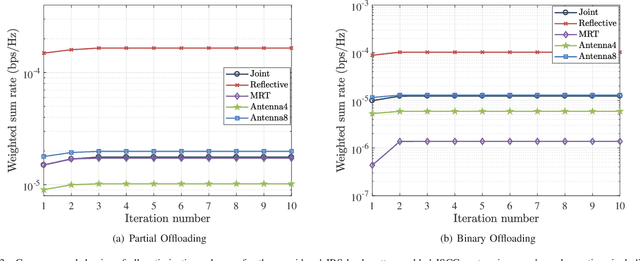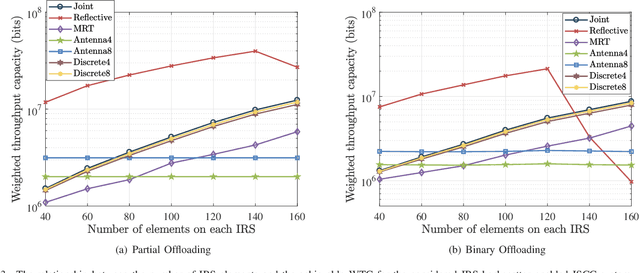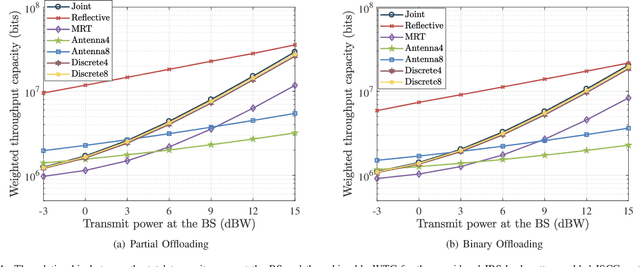An IRS Backscatter Enabled Integrated Sensing, Communication and Computation System
Paper and Code
Jul 20, 2022



This paper proposes to leverage intelligent reflecting surface (IRS) backscatter to realize radio-frequency-chain-free uplink-transmissions (RFCF-UT). In this communication paradigm, IRS works as an information carrier, whose elements are capable of adjusting their amplitudes and phases to collaboratively portray an electromagnetic image like a dynamic quick response (QR) code, rather than a familiar reflection device, while a full-duplex base station (BS) is used as a scanner to collect and recognize the information on IRS. To elaborate it, an integrated sensing, communication and computation system as an example is presented, in which a dual-functional radar-communication BS simultaneously detects the target and collects the data from user equipments each connected to an IRS. Based on the established model, partial and binary data offloading strategies are respectively considered. By defining a performance metric named weighted throughput capacity (WTC), two maximization problems of WTC are formulated. According to the coupling degree of optimization variables in the objective function and the constraints, each optimization problem is firstly decomposed into two subproblems. Then, the methods of linear programming, fractional programming, integer programming and alternative optimization are developed to solve the subproblems. The simulation results demonstrate the achievable WTC of the considered system, thereby validating RFCF-UT.
 Add to Chrome
Add to Chrome Add to Firefox
Add to Firefox Add to Edge
Add to Edge